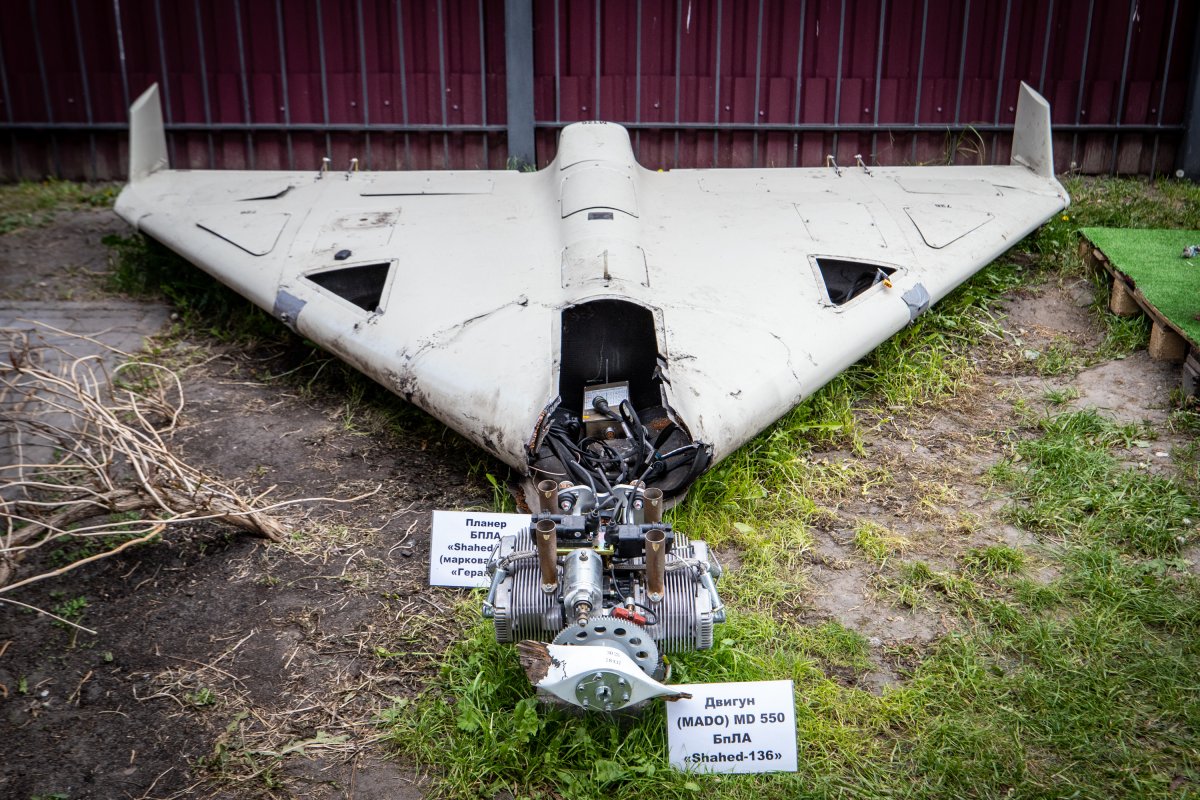A hacker group has claimed to have gleaned the production costs of the Iranian-made Shahed-136 kamikaze drones being used extensively in Russian attacks on targets in Ukraine.
The Prana Network said it had compromised the email servers of the Iranian company Sahara Thunder, which is believed to act as a front for the Islamic Revolutionary Guard Corps (IRGC) to produce the now-infamous attack drones.
The documents released by Prana appear to detail negotiations between Russian and Iranian representatives for the delivery of thousands of Shahed munitions, as well as the ongoing project to set up a Shahed factory in the Alabuga special economic zone in central Russia.
The unit cost set by the Iranian side was 23 million roubles—or around $375,0000 at the time—according to the Prana leak. Moscow's representatives, Prana said, secured a reduced price in bulk orders. An agreement was purportedly reached for 2,000 Shaheds at a unit cost of $290,000, and for 6,000 at a unit cost of $193,000.

The Prana documents suggest a far higher unit cost than previously reported. The Guardian wrote in January that a Shahed is thought to cost around $20,000 to make, while the Atlantic Council put the production cost at between $20,000 and $40,000.
The Prana leak also suggested that Russia is paying for at least some of its Shahed imports in gold. In February 2023, for example, the Alabuga Machinery company transferred 2 million grams of gold to Sahara Thunder.
Newsweek cannot independently verify the report and has contacted the Russian and Iranian foreign ministries by email to request comment.
The Shahed drones have become a key element of Russian attacks on Ukraine over almost two years of full-scale war. Kyiv said in December that Russia had launched more than 3,700 of the UAVs into Ukraine in the previous 22 months.
The Shahed-136 officially entered service with the Iranian military in 2021. The drone, its variants, and predecessors have also been used by Houthi forces fighting in Yemen.
They are known as Geran drones by Russian forces, while Ukrainians have nicknamed them "lawnmowers" and "flying mopeds" on account of their noisy engines. Russian forces have seemingly upgraded their Shaheds to increase their survivability, the latest versions sporting black paint, jet engines, and material to reduce radio and radar signals.
The relatively low cost of the Shaheds have made them an important part of Russia's bombardment campaign. The drones are often used to target energy and maritime infrastructure, their range sufficient to reach Ukraine's western Lviv Oblast and facilities along the Danube River, which forms part of the southwestern frontier with Romania.
Moscow appears to value its Shahed supply, and according to The Washington Post is constructing a factory to build the drones in the central Russian region of Tatarstan. The facility, the newspaper said, is intended to be able to produce up to 6,000 kamikaze UAVs by 2025.
Uncommon Knowledge
Newsweek is committed to challenging conventional wisdom and finding connections in the search for common ground.
Newsweek is committed to challenging conventional wisdom and finding connections in the search for common ground.
About the writer
David Brennan is Newsweek's Diplomatic Correspondent covering world politics and conflicts from London with a focus on NATO, the European ... Read more
To read how Newsweek uses AI as a newsroom tool, Click here.








